Since the warmongering whores of both the Democrappy and Repukey party are just itching for WWIII, I thought it would be fun to look at some Not-Ready-For-Prime-Time weaponry invented by humanity’s past idiots. Enjoy.
==============================================
SUBMARINES
Neger (Germany, WWII)
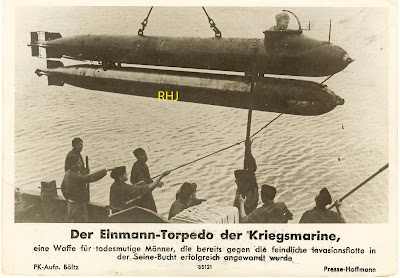
First thing you need to know – easily butt-hurt politically correct people should stop reading now — is that “Neger” is German slang for “nigger”. This submarine derived its name from the fact that the Germans couldn’t even find volunteers from their mental institutions – “You want me to drive THAT thing? Nein!! Find yourself another nigger!”. Eventually they found pilots from the National Suicide Hotline.
The above picture looks like a torpedo glued to another torpedo, with a human riding in one of them. But, that’s actually a submarine … except, The Neger couldn’t actually, you know … submerge! The thing floated along like a Giant Turd while the pilot stuck inside struggled to breathe, or see. The Neger would be positioned just slightly below the surface of the water. Waves constantly washed over the dome, making it basically impossible to see through. It was a fun boat.
Oh, it had absolutely zero navigational equipment. Neger’s pilots were instructed to bring their own watches with compasses in them and peer through the vehicle’s bubble dome to gradually steer toward enemy ships – which as already noted, was next to impossible. But wait, there’s more. Upon reaching a target, the pilots had to pull a lever to launch the Neger’s lone torpedo. Unfortunately, the release mechanism jammed more than half the time, launching the pilot for one helluva last ride to glory.
The Germans produced 200 of these suicide subs in 1944. Amazingly, they were able to destroy 5 ships in the Normandy invasion (one cruiser, one destroyer, and three minesweepers). The fatality rate for Neger pilots was 80%.
Aoshima I-400 (Japan, WWII)

Yes, that’s an airplane on the sub!
US warships transiting from the Atlantic to the Pacific had to pass through the Panama Canal. Admiral Yamamoto thought that this was the Achilles Heel of the US Navy. So, he had this idea. Let’s severely damage the canal and choke off US fleet deployment by sinking a bunch of American ships while they were in the canal. Hmmm, OK, so how best to accomplish that? Bombers? Sounds good. Aircraft carrier? Sounds good. Submarines? Sounds good. Then, in a moment of orgasmic ecstasy, Admiral Yamamoto thought to himself, “Hell yeah, Grasshopper! Let’s combine all three in one vessel!!”
As such, the Aoshima I-400, the Death Star of WWII, was born. It displaced 6,500 tons and was over 400 feet long, or about three times the size of ordinary submarines of the day. It had a figure-eight hull shape for additional strength to handle the on-deck hangar for housing the three Aichi M6A Seiran aircraft. In addition, it had three anti-aircraft guns and a large deck gun as well as eight torpedo tubes from which they could fire the Long Lance – the largest, longest ranged and most deadly torpedo in use at the time. It housed a 144-person crew and more guns than the state of Texas. It stored enough fuel to circle the entire globe one and a half times and totaled over 13,000 horsepower of propulsion. Woo hoo!!!
But, in the biggest dickhead management cost-saving decision in history, the Japanese decided “Who the hell needs a runway?”. They would save a lot of money if their kamikaze pilots exploded instead of landing back on the submarine. (Takeoff, a one-time event, was accomplished via an 85-foot catapult.) These super-subs never fulfilled their designed roles; it’s unclear if they actually fought at all. Two of them were captured at war’s end and eventually scuttled in US waters.
AIRPLANES
ME163 Komet (German, WWII)

This airplane featured a number of significant technical innovations; the first ever rocket-powered aircraft, the first ever swept-wing fighter, the world’s fastest aircraft – unsurpassed for several years. Now, for the bad news.
The designers forgot a few basics about flying. There was no permanent landing gear. Rather, the Komet was set on top of a disposable set of wheels during takeoff … whereby the wheels would often fly up and damage the airplane. For landing it had a single spring-loaded skid that often wouldn’t deploy in time. They neglected cockpit pressurization leaving the pilots constantly fighting for consciousness. The Nazis didn’t have time to adequately test the rocket fuel mixture, which was rather unstable and prone to exploding at any time.
Now, assuming it didn’t wreck on takeoff, or blow up seconds afterwards, there was still one small problem …. it was too fast to attack enemy aircraft. The rockets were so powerful the pilot only had a few seconds to aim before blasting miles past enemy fighters. The airplane only had just under eight minutes of rocket fuel! In other words, pilots had to take off, locate the enemy, stage an attack, fly back to base, and land … all under eight minutes. It was an exhilarating time to be a pilot in the Luftwaffe. Man, oh man, one felt so ALIVE!
Kalinin K-7 (Russia, 1931)
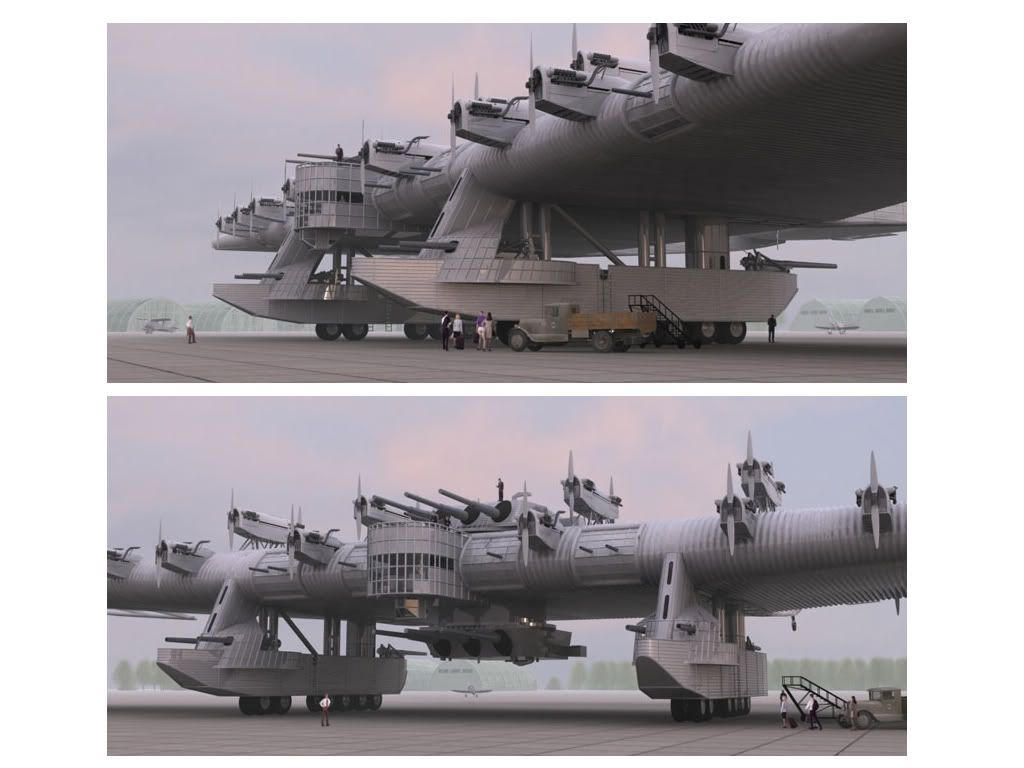
The above picture just SCREAMS – “Yo! Amerika! My dick is bigger than your dick!!” Bigger than a B-52! 12 engines! (OK, so they’re tractor engines … so what!). Room for 112 fully equipped paratroopers! Eight 20 mm autocannons! Eight 7.62 mm machine guns! 22,000 pounds of bombs! Or, in passenger configuration, able to carry two Hillary Clintons and one Moochelle Obama!
Too bad the Russkies didn’t know about “resonance” … whereby if the right frequency is emitted, an object will resonate sympathetically. The K-7 was equipped with engines that hummed at the same frequency as the plane. On its maiden voyage, the tail shook like it was trying to escape from the rest of the craft, and the pilots were forced to land it before it fell apart. “No problem, Comrade Stalin!”, said the chief engineer, Konstantin Kalinin. So, they found some steel beams laying around and welded the tail on. Test flight number two didn’t go as planned. The tail vibrated itself off like a cheap porn queen working solo overtime, and the airplane plunged straight into the ground. Comrade Stalin then had Comrade Kalinin arrested and executed as an enemy of the state.
Morane-Saulnier L (French, WWI)
One of the very first fighter planes fitted with a forward-facing machine gun. You might have wondered – “How did they not shoot the propeller?”.
The right way to do it is by using an “interrupter gear”, which would precisely time the bullets to pass in between the blades as they spun around. The French had a different idea. According to wiki, the French slapped on “metal wedges fitted to the rear surfaces of the propeller blades at the points where they could be struck by a bullet …. the copper and brass-jacketed bullets that the French used were not likely to damage the harder steel of the wedges themselves.” That was the theory. Sometimes the bullets ricocheted into the cockpit, thereby forcing the Frenchie to surrender to his own airplane … also a first. The plane did manage to shoot down three German aircraft.
However, massive drag from the metal deflectors caused the engine to fail, leading to an emergency landing in German territory. Lateral control (roll) was achieved by “wing warping” – a system of pulleys and cables to actually twist the trailing edges of the wings in opposite directions. The Type L was swiftly rendered obsolete thereby saving thousands of French pilot’s lives … from themselves.
The XP-79B Flying Ram (USA, WWII)
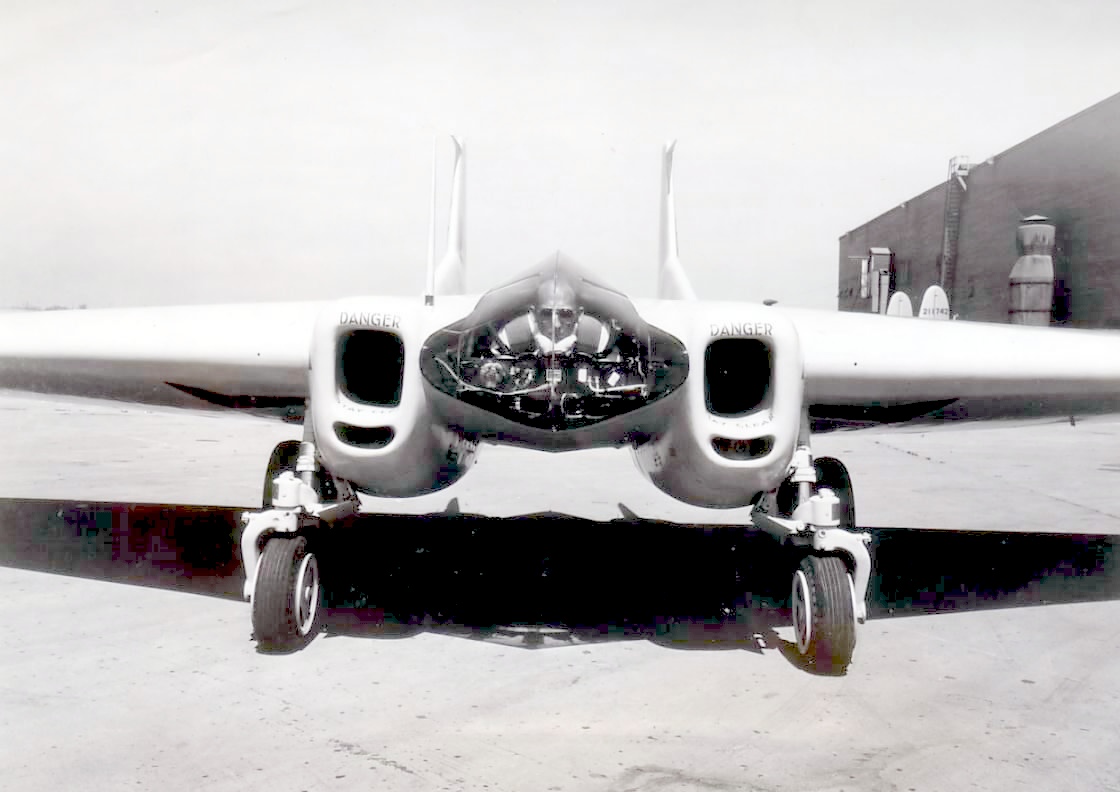
I was tempted to file this under the “Bat Shit Crazy” category, but I’m trying to refrain from excessive potty-mouth. This was a revolutionary “flying wing” aircraft … the first American rocket-powered aircraft to ever achieve flight and capable of climbing a then astonishing 4,000 feet per minute. But that wasn’t the revolutionary idea. American engineers saw the potential in this aerial marvel and decided to reinforce it with magnesium plates. Why? Ummmm … in order to intentionally collide it in mid-air with other planes. “Neger, say what??”
Yeah, somebody decided that merely shooting other airplanes with bullets was for pussies. Real men play Airplane Demolition Derby and ram the shit out of the enemy! In an act of Extreme Compassion the engineers designed the plane so that the pilot flew in a prone position – that way his head was sure to be decapitated or smashed into a thousand pieces upon impact. But, wait, there’s more. Ramming just wasn’t enough batshit insanity, so they powered the airplane with rockets containing nitric acid – a ridiculously ludicrously toxic and corrosive chemical.
On its first test flight on 12 September 1945, the airplane lost control 15 minutes into the flight for unknown reasons. Test pilot Harry Crosby attempted to bail out but was struck by the aircraft and fell to his death. At least he wasn’t decapitated. The second prototype was cancelled shortly thereafter, thus proving that some ideas are way too retarded for even the US Military.
The Blackburn TB (United Kingdom, WWI)

I’m including this airplane because most sources claim it’s – “one of the most specialized aircraft ever built”. It was designed and built to bring down Zeppelins. More on that in a minute.
It had all kinds of problems. There was too much flexing between the two fuselages and in the control cable runs, which made it difficult for the pilot to maintain control. Starting the engines was a tad bit awkward. The observer had to stand on the floats while the engines were started. The rotary engines often spilled gasoline onto the floats, which could then catch fire, so the observer also had to bring a fire extinguisher with him while he started the engines. Starting the engines was a fun crapshoot. OK, back to killing Zeps.
Let’s keep this simple. The Blackburn TB’s underpowered engines had a maximum altitude of 8,000 feet. Zeppelins could go as high as 21,000 feet. Haha and LMFAO!!! Too bad they didn’t have Google back then. But, wait, there’s more. Assuming the Zeppelin captain was stupid enough to fly at 7,000 feet, then you might be wondering what armaments the Blackburn TB had to bring down the Zep. Darts! That’s right, flaming darts. The idea was to fly above enemy Zeps, drop darts on them, thereby puncturing the zeppelin’s gas envelopes and causing a fatal explosion, all while hoping like hell you were far enough away to not be engulfed by flames yourself. Seven TBs were delivered to the Royal Naval Air Service in 1916. Seven TBs were retired from service in 1917 having failed to blow up a single Zep.
V-1 Flying Bomb (Germany, WWII)

The Japs weren’t the only nation who hated their pilots. The Germans had their own kamikazes known as the Leonidas Squadron. This is how the design of this airplane must have happened. One day some German engineers are looking at a V-1 rocket when they said to themselves, — “Ach, Fritz! Ya think vee can strap a human to dis thing?”. And, indeed, they did.
They hollowed out a tiny cockpit and added a plywood seat (really). The flying bomb would be launched from a larger aircraft like a Protoss Carrier, then the pilot would steer toward his target until the last possible moment, at which point he’d presumably eject. And if he had survived that, he had a 99% chance (really) of being sucked back into the pulse-jet engine intake, positioned right behind his head. Volunteers were required to sign a declaration which said, “I hereby voluntarily apply to be enrolled in the suicide group as part of a human glider-bomb. I fully understand that employment in this capacity will entail my own death.“
The program was eventually scrapped when the head of the program, Werner Baumbach, convinced Hitler that suicide missions were not part of the German warrior tradition. After the war, Werner Baumbach designed fuel tanks for the Ford Pinto.
Bachem BA-349 Natter (Germany, WWII)

Things were tough for the German Luftwaffe in 1944. They were running out of qualified pilots, and materials to build airplanes. But, German engineering has a solution to every problem! So, they designed an Airplane For Dummies.
Since takeoff and landing are dangerous and requires skill, let’s build a plane that requires neither. We’ll just shoot it straight up into the air. Let’s just give it a 12 foot wingspan. Let’s make it mostly of wood and glue. Let’s not include an ejection seat. Rather, let the pilot unbuckle himself and leap out while going over 600 mph, but not before opening the canopy held on by an old furniture hinge. Really. Last but not least, let’s fit it with 36 unguided rockets! Oh, wait … let’s give the pilot just 7 minutes of fuel.
It should have worked like this. Four strap-on Schmidding rockets were used for launch, providing a combined thrust of about 11,000 pounds for 10 seconds before they were jettisoned. The plane rode up a rail for about 75 feet, by which time it was going fast enough for the flight controls to keep it flying straight. The plane took off and was guided almost to the bomber’s altitude using radio control from the ground, with the pilot taking control right at the end to point the nose in the right direction, jettison the plastic nosecone and pull the trigger. This fired a salvo of 36 rockets, at which point the plane flew up and over the bombers. After running out of fuel the plane would then be used to ram the tail of a bomber, with the pilot ejecting just before impact to parachute to the ground.
Except it didn’t cuz of something called “reality”, which bitch-slaps theory one hundred percent of the time. The crazy thing is the Germans actually tested these things and built 36 of them. The only manned flight killed the test pilot, and none of the 36 Natters ever saw combat.
Huge resource page here; http://www.456fis.org/Bachem_Ba-349.htm
TANKS
Mark I (Britain, WWI)

Am I including this tank because it was the world’s first tank to enter combat? No. Or, because it was so loud the enemy could hear it coming from miles away? No. Or, because it glowed in the dark? No. Or, because the fuel tanks were placed on the roof unprotected, and an artillery or mortar shell impact literally guaranteed a tank full of Crispy Critters? No. I’m including it because it killed its own soldiers.
It had this one itsy-bitsy design flaw; there was no separation between the engine and the crew compartment. Just imagine installing your car’s motor in the passenger seat, and then sealing all the windows and vents with steel. It was just like that. The massive amounts of carbon monoxide pumping out from the engines of the Mark I would sometimes cause entire tank crews to pass out in the middle of combat. The temperature could also get up to 120 degrees inside, thereby causing heatstroke for those soldiers surviving the toxic fumes.
But, the Brits – smart chaps, one and all – made improvements in the subsequent model. They extended the length. And that’s it! That’s right, they didn’t address the toxic fume problem. Instead of killing just 8 soldiers at a time, now they could kill even moar! Hip hip, hurray, long live the Queen …. which she would, as long as she stayed away from this damned death trap.
The Bob Semple (New Zealand, WWII)

The first problem with this tank is that it looks like a bad prop from the 1960’s Lost In Space science fiction show. Weapons should never make you want to say, “Awww, how cute!”. Second is the name. Never name a weapon Bob-Anything. Bobs are people you beat up in high school. The only worse name would have been the Jim Quinn tank.
During WW2, the British couldn’t afford to send any tanks to assist New Zealand. So, they made their own, the Bob Semple (named after its designer, the New Zealand Minister of Works) … which, after seeing it, caused many enemy Japanese soldiers to die from laughing to death.
It was based on an American tractor tank, the US Disston ‘Six Ton Tractor Tank’, because New Zealand did not have a heavy industry to produce tanks … but, they sure did have a lot of farms with tractors. Mr. Semple was unable to obtain blueprints of this American tank. However, he did have a postcard of it, and went with that. I’m not kidding.
As you can see, the tank was made by placing an armored box on top of a tractor. “Armored” meaning “made from roofing material.” The Kiwi’s believed that the corrugated surface would deflect bullets, you know, because it was curvy.
The little country also didn’t have much artillery, so they fitted the Bob Semple with as many machine guns as it could hold … six of ‘em. The total crew consisted of eight people crammed in that can like sardines. One of the machine gunners had to lie on a mattress in the belly of the tank …. on top of the burning hot engine. I think the other five had to stand on the first one’s back. The Bob Semple was also extremely top heavy and slow. It couldn’t even change gears without coming to a full stop. The vibrations caused the machine guns to jam, and even when they worked, they were terribly inaccurate.
To their credit, the New Zealand Army rejected the Bob Semple tank for use in their forces. The units that had already been built were dismantled, and turned back into farm tractors ….. thus filling the Biblical passage engraved in the United Nations building, “and they shall beat their swords into plowshares”. The Japanese canceled the invasion of the island upon the rumor that New Zealand obtained 243 postcards of American aircraft carriers.
The St-Chamond (France, WWI)
Below is the first French tank, the Schneider. It was a total piece of Le Crap and was shredded on the battlefield. Even giving it a German name couldn’t shake the sad fact that it was built by France.

So, the French started from scratch. And they built this AWESOME tank!

Well, “awesome” except for one small problem as you can see below.
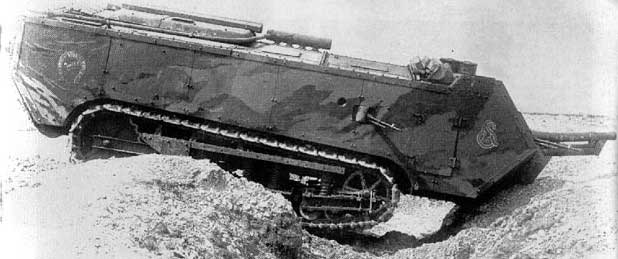
It could not — Simply. Could. Not. — cross over uneven terrain such as railroad tracks, three foot “hills”, or even large potholes. Also, the gun couldn’t rotate or elevate at all. So, when it got stuck, it was the most phenomenal tank ever built in terms of fighting against enemies like dirt and mud. Too bad WWII wasn’t fought in Iowa ….cuz that bad-boy would have kicked some serious ass!!
SHIPS
De Ruyter Cruiser (Netherlands, WWII)

This ship was doomed from the start for two reasons; 1) it was built during the Great Depression and, 2) there was a strong pacifist movement in the Netherlands in 1933. These two things resulted in cost cutting measures that resulted in an inferior cruiser compared to other nations … who liked war and had money. Oh, and maybe cuz it was designed by morons. Its anti-air capability was all limited to one cluster of guns on one side of the ship. This meant its guns were often fired through the ship. Confused? Here, this is all you need to know;

The De Ruyter didn’t last very long in World War II. It was sunk quickly during its first major engagement in the Battle of the Java Sea, ironically, by a torpedo.
Frigate Vasa (Sweden, 1626)

Gustavus Adolphus (1594–1632) was one of Sweden’s most successful kings in terms of warfare. He was in power for about a decade when he decided Sweden needed a kick-ass flagship. So, he commissioned the Vasa, and my oh my, what a ship she was! No expense was spared. It boasted 1,210 tons displacement, 226 feet long, 172 feet high, and a crew of 145 sailors and 300 soldiers. Its 64 cannons insured it was probably the most powerful ship of its time.

On top of all that it was extremely ornate. German and Dutch artists carved imagery from Roman and Greek antiquity, the Old Testament and even a few from ancient Egypt. There were fantastic and frightening creatures, including mermaids, wild men, sea monsters and tritons. The entire ornamentation was painted in vivid colors, including gold leaf.
The King and his builders thought of EVERYTHING.
Well, except for two things; wind and waves. The problem was that the portholes for all the cannons were so close to the waterline that as the ship swayed in the first gust of wind, half the ocean flowed freely into its underbelly. Oops!!
Soooo, on the Vasa’s maiden voyage, and a mere one nautical mile into the voyage, the Vasa fired its guns as a small gust of wind hit her sails ………… and she promptly sank.
Tegetthoff Class Battleship (Austria-Hungary, 1912)

First, what you are about to read is really all the Hungarians fault. Austrians aren’t this stupid.
Apparently, the only question in consideration when building this ship was “How many guns can we fit on just one ship?” Well, about 50, including twelve cartoonishly large caliber guns mounted on the centerline, each one firing a shell 12 inches in diameter. Now, I’m not a shipbuilder, but as an authentic Austrian I certainly would have asked this one question; — “Will all these guns make the ship top-heavy and difficult to maneuver?” Really, I would have.
Well, the Hungarians didn’t ask, and the ship was so ridiculously top-heavy that it physically couldn’t turn more than 10 degrees without tipping over and dumping everybody into the water. There were two possible solutions to this problem. They could embark on a large and expensive refit and overhaul the ships to redistribute the weight. Or, they could just avoid turning …. ever. The Hungarians decided to go with the latter and banned sharp turning on all four existing battleships!! And now you know the real reason for the demise of the Austro-Hungarian empire.
OTHER
Anti-Tank Hand Grenade #74 (Great Britain, WWII)
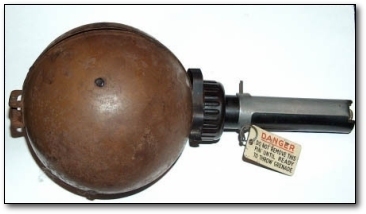
The British army faced a shortage of anti-tank guns. So, this called for British ingenuity which produced the Anti-Tank Hand Grenade #74 … aka, “the sticky grenade”, aka “Satan’s Maraca”. The really amazing thing is that the Brits produced 2.5 million of these abortions before they realized, “Hey, this shit is so stupid even Wily E. Coyote won’t use it.”
Technically, here is how it worked. The grenade consisted of a glass sphere. Inside the sphere was nitroglycerin and other stuff. Then they slapped on some powerful adhesive (the “sticky” part) and surrounded it in a sheet-metal casing. The casing would fall away when the soldier pulled a pin on the handle of the grenade, and exposed the sphere. Then another pin was pulled to activate the firing mechanism. Then the soldier would then attempt to attach the grenade to an enemy tank, and had to do so with enough force to break the glass ball. (It wouldn’t stick to dusty or muddy tanks … just a minor problem as Germans really really liked clean tanks). After it was maybe-attached, another lever on the handle had to be released to activate a five-second fuse, which would then detonate the nitroglycerin.
Ok, let’s recap that in non-technical terms. For this thing to work, a soldier had to expose himself to enemy fire, run up to a tank while wielding a wad of sticky explosive, pull a pin, hope the glass breaks, pull another pin, stick it on a tank that wasn’t dusty or muddy, pull a lever, and run like hell for five seconds hoping your ass doesn’t get filled with frags. That last part? Ummm, yeah, those grenades loved sticking to the soldier’s uniforms. The grenade-from-hell probably killed more British soldiers in the entire North Africa campaign, than it killed German tanks … which numbered just six.
FP45 Liberator

I know what you’re thinking – “Why did the author include a cheap-ass Walmart toy in this list?”. Yeah, well, the Guide Lamp Corporation (which made headlights for cars) in Anderson, IN made one million of these in 1942 … over the course of a mere 11 weeks.
Here’s the deal. It’s 1942 and the Germans are running rampant all over Europe. European citizens don’t have enough guns. Some Pollack military attaché asked the USA for help – “Can you make us a gun that’s cheaper than a pound of kielbasa?” And, so, the USA produced this stamped, 16 ounce pistol, for two bucks each.
The gun was supposedly designed with psychological warfare in mind. The idea being that a million of these dropped behind enemy lines would have a devastating effect on the morale of occupying troops. But, General Dwight D. Eisenhower’s thought it was a retarded idea and only accepted a shipment of 25,000, and distributed even less. General MacArthur didn’t want them in the Pacific either, but did ship 100,000 to China … who saved them and sold them to Walmart many years later.
The ideal kill range was about 12 feet, and you couldn’t hit the broadside of a barn past 25 feet. The Liberator was a single-shot gun. In order to reload it, you needed to force a wooden dowel down the barrel of the gun and retrieve the spent shell casing. So, here was the true purpose of the gun. Some peasant dude Euro-farmer would sneak up real close to a Nazi soldier, like ten feet close, shoot him, and then steal his not-a-piece-of-shit gun. Seriously.
ACMA Troupes Aerol Portees (France, WWII)

This is a Vespa Scooter armed with a 75mm cannon …. which gave rise (pun intended) to Mae West’s famous quote – “Is that a gun in your pants, or are you just happy to see me?”
Deployed with their airborne forces, five parachutes would carry the two-man gun crew, weapon, ammunition, and two scooters safely to earth, and the men would load the weapon on one scooter and the ammo on the other, then ride away looking for stuff to blow up. How does one ride a scooter, fire and aim a cannon while your nuts are resting on a hot barrel? I dunno. But, the French deployed about 800 armed scooters in both Algeria and Indochina, and were said to be rather effective. Those crazy Frenchies!!
The Schwerer Gustav (Germany, WWII)

In closing, let’s take a very quick look at the biggest gun fired in battle, ever.
It was 150 feet-long and weighed 2.7 MILLION pounds. The shells were 11 feet-long, and nearly three feet wide. They weighed 14,000 pounds. The Gustav could hurl them 23 miles. (It took a half hour just to load it.) That’s a real tank in the pic below, not a model, and a real Gustav shell!

Of course, the problem with Heavy Gustav was that it was highly impractical. It took 250 men to get it assembled and ready to fire. It took another 2,500 men to lay twin rails for the damn thing just so they could move it towards Russia, the only country on Earth large enough for Heavy Gustav to hit. Some German engineer actually tried to fit Gustav’s 800 millimeter gun onto a tank. But, Adolph Hitler accused the man of Small Penis Syndrome and cancelled the project.
IN CLOSING ………..
The Germans have a lot of failures in this essay. But, they’ve had many successes as well. Many decades before there was a B2 Stealth bomber, there was the German Ho-229.

The only pressing question remaining … one I cannot answer is — “How did such a proud warrior nation become nothing but a pussified vassal state sucking on America’s teat?”


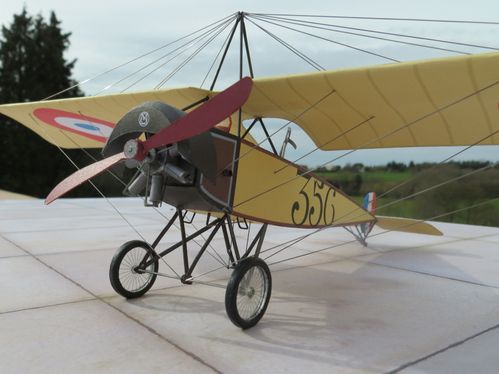

Stucky, everyone is giving you a positive vote and response…
because we love you!!
Great post Stucky. You are loved.
EL Coyote says: Bea, they weren’t vaporized forever, they simply changed locales, like Jfish.
Bea Lever says: EC- I had not noticed THE FISH was missing. Well what do you know.
At least that bullhead human hybrid had balls. Bet he shaves his gills with the back of his hands. Hell, he is probably teaching Krav Maga to Ronda Rousey & Chuck Norris right now. Maybe he’ll swim back someday.
Hey, Stubby, he’s posting as Too Controversial at the moment.
Stucky, don’t quit you’re day job.
At least the pictures were interesting.
The Cocks (americans) the J*ps, the Germs almost got everybody killed. What a war! Now the Cocks (americans) put a negro in control and will get everybody killed again.
a couple of things wrong with this article
1. the Kalinin K-7 wasn’t actually that big.
2. midget subs were common among the axis powers.
3. the Horton ho 229 wasn’t a stealth bomber even though it looks like one
4. the v1 rocket or buzz bomb was very common especially to the British as the Germans regularly fired them across the channel at late war stages the germans actually built a manned v1.
5. the British mk1 tank wasn’t uncommon it was the world’s first tank.